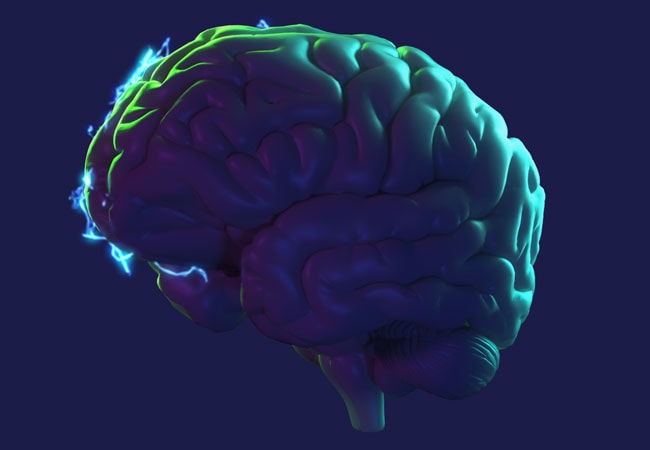What Is The Function Of Anticonvulsants In Seizure Control?

Anticonvulsants are a class of medications commonly used in the management of seizures. They are designed to prevent or reduce the occurrence of epileptic episodes, which can be debilitating and potentially life-threatening.
The use of anticonvulsants in seizure control is based on their ability to modify the electrical activity in the brain and stabilize the neuronal networks that are involved in seizure generation.
This article aims to explore the function of anticonvulsants in seizure control by examining their mechanism of action, effectiveness, side effects and risks, dosage and administration, as well as considerations for long-term use.
By understanding the role of anticonvulsants in seizure management, healthcare professionals can make informed decisions regarding the selection and administration of these medications, ultimately improving patient outcomes.
Key Takeaways
- Anticonvulsants play a crucial role in seizure control.
- They help in achieving optimal seizure control while minimizing side effects.
- Regular monitoring and adjustment of medication are required to ensure effectiveness.
- Close supervision is needed during the titration process to minimize seizure risk.
Types of Anticonvulsants
Various types of anticonvulsants are available for the treatment of seizures, including sodium channel blockers, GABA enhancers, and calcium channel blockers. Sodium channel blockers, such as phenytoin and carbamazepine, work by inhibiting the abnormal electrical activity in the brain that causes seizures.
GABA enhancers, such as benzodiazepines and barbiturates, increase the inhibitory effects of gamma-aminobutyric acid (GABA), a neurotransmitter that reduces the excitability of neurons.
Calcium channel blockers, such as ethosuximide and valproic acid, decrease the influx of calcium into neurons, thereby reducing excessive neuronal activity.
When prescribing anticonvulsants, it is crucial to consider potential drug interactions, as these medications may interact with other drugs and affect their efficacy or increase the risk of side effects.
Additionally, alternative treatments, such as ketogenic diet or vagus nerve stimulation, should be considered in cases where anticonvulsants fail to provide adequate seizure control.
Collaborative decision-making between healthcare providers and patients is essential to identify the most suitable anticonvulsant and treatment approach, taking into account individual factors and preferences.
Mechanism of Action
Anticonvulsants act by modulating neuronal excitability and inhibiting the abnormal firing of neurons, thereby preventing the occurrence of seizures. These medications exert their effects by targeting various mechanisms involved in seizure generation and propagation.
For instance, some anticonvulsants enhance the inhibitory neurotransmitter gamma-aminobutyric acid (GABA), which reduces neuronal excitability. Others inhibit voltage-gated sodium channels, preventing the excessive influx of sodium ions during an action potential. Additionally, certain anticonvulsants block calcium channels or modulate glutamate receptors, further reducing neuronal excitability.
While anticonvulsants are effective in seizure control, it is important to consider potential alternatives due to their side effects and limitations. Moreover, the possibility of drug interactions should be taken into account, as some anticonvulsants may alter the metabolism or efficacy of other medications, highlighting the importance of careful monitoring and individualized treatment plans.
Effectiveness in Seizure Control
In order to evaluate their efficacy, it is crucial to assess the ability of anticonvulsants to effectively manage and mitigate seizure activity. Anticonvulsants are widely used in the treatment of epilepsy and other seizure disorders. They work by targeting various mechanisms involved in the generation and spread of seizures, such as modulation of voltage-gated ion channels or enhancement of inhibitory neurotransmission. However, the effectiveness of anticonvulsants in seizure control can vary among individuals, and finding the most suitable medication may require a trial-and-error approach. Additionally, anticonvulsants may interact with other drugs, potentially affecting their efficacy or causing adverse effects. Therefore, it is important for healthcare providers to carefully consider drug interactions and individual patient characteristics when prescribing anticonvulsants. Furthermore, alternative treatments, such as ketogenic diet or neurostimulation, may be considered in cases where anticonvulsants are ineffective or poorly tolerated.
| Drug Interactions | Alternative Treatments |
|---|---|
| Carbamazepine | Ketogenic diet |
| Valproic acid | Vagus nerve stimulation |
| Phenytoin | Transcranial magnetic stimulation |
| Lamotrigine | Deep brain stimulation |
| Topiramate |
Side Effects and Risks
One important aspect to consider when using anticonvulsants is the potential for side effects and associated risks.
While these medications are effective in controlling seizures, they also come with a range of adverse effects that can impact the quality of life for individuals with epilepsy.
Some common side effects of anticonvulsants include drowsiness, dizziness, nausea, and mood changes.
In addition, there is a risk of more serious adverse effects such as liver damage, blood disorders, and allergic reactions.
To manage these side effects, healthcare providers may explore potential alternatives or adjust the dosage of the medication.
It is essential for patients and their healthcare team to communicate openly about any side effects experienced, as this can help in finding the most suitable treatment plan while minimizing risks.
Dosage and Administration
To ensure the effective use of anticonvulsant medications, it is crucial to carefully follow the prescribed dosage and administration guidelines. Dosage accuracy plays a significant role in achieving seizure control while minimizing the risk of side effects. The dosage of anticonvulsants is often individualized based on factors such as age, weight, and the type of seizures being treated. It is important for healthcare professionals to consider these factors and make necessary adjustments to achieve the desired therapeutic effect. Additionally, patient compliance with the prescribed dosage regimen is essential for successful seizure management. Adherence to the prescribed schedule helps maintain consistent drug levels in the body, optimizing the medication’s effectiveness. A table showcasing different anticonvulsants and their recommended dosages can be found below:
| Anticonvulsant | Dosage Range |
|---|---|
| Carbamazepine | 200-1600 mg/day |
| Valproic Acid | 500-3000 mg/day |
| Lamotrigine | 25-400 mg/day |
| Phenytoin | 200-400 mg/day |
| Levetiracetam | 500-3000 mg/day |
Table 1: Recommended dosages for common anticonvulsant medications.
By adhering to the prescribed dosage and administration guidelines and ensuring patient compliance, healthcare professionals can optimize the effectiveness of anticonvulsant medications in seizure control.
Combination Therapy
Combining multiple anticonvulsant medications has been explored as a potential strategy for enhancing therapeutic efficacy in the management of seizures. This approach involves the simultaneous administration of two or more anticonvulsants, with the aim of achieving better seizure control.
Several studies have compared the efficacy of combination therapy with monotherapy, and have found mixed results. Some studies have shown that combination therapy can lead to improved seizure control compared to monotherapy, while others have found no significant difference between the two approaches.
Adherence challenges can arise with combination therapy due to the increased complexity of the treatment regimen and the potential for drug interactions. Additionally, there is a higher risk of adverse effects with multiple medications. Therefore, careful consideration of the potential benefits and risks is necessary when deciding on combination therapy for seizure control.
Considerations for Long-Term Use
This paragraph will discuss considerations for long-term use of anticonvulsants, specifically focusing on monitoring for tolerance and effectiveness, and adjusting medications over time.
In long-term treatment with anticonvulsants, it is important to regularly monitor the patient’s response to the medication and assess its effectiveness in controlling seizures.
Additionally, tolerance can develop over time, leading to decreased efficacy of the drug, so adjustments to the medication may need to be made to maintain seizure control.
Monitoring for Tolerance and Effectiveness
Monitoring for tolerance and effectiveness is essential in the use of anticonvulsants for seizure control, as it allows for the optimization of treatment and the identification of any potential adverse effects. Regular monitoring of outcomes is crucial to assess the response to anticonvulsant therapy and make necessary adjustments in dosage or medication.
This involves evaluating the frequency, severity, and duration of seizures, as well as any side effects experienced by the patient. In addition, monitoring patient compliance with the prescribed medication regimen is important, as non-adherence can lead to inadequate seizure control. Various methods can be employed to monitor effectiveness, such as seizure diaries or electronic seizure monitoring devices.
Tolerance to anticonvulsants may develop over time, necessitating dose adjustments or switching to alternative medications. Therefore, ongoing monitoring is vital to ensure optimal seizure control and minimize the risk of adverse reactions.
Adjusting Medications Over Time
During the monitoring period for tolerance and effectiveness of anticonvulsants, adjustments to the medication regimen may become necessary. This leads us to the current subtopic of adjusting medications over time.
The process of adjusting anticonvulsant medications involves a carefully planned titration process, where the dosage is gradually increased or decreased to achieve optimal seizure control while minimizing adverse effects. The titration process is crucial in medication management as it allows healthcare professionals to find the most effective dose for an individual patient.
It is important to note that the titration process should be carried out under close supervision, as rapid changes in medication dosage can lead to an increased risk of seizures or adverse effects. Achieving the right balance of anticonvulsant medication is an ongoing process that requires regular monitoring and adjustment to ensure optimal seizure control.
Frequently Asked Questions
Can anticonvulsants be used to treat conditions other than seizures?
Anticonvulsants can also serve as mood stabilizers and are utilized as a treatment option for neuropathic pain. These medications have shown efficacy in managing these conditions, expanding their therapeutic application beyond seizure control.
How long does it typically take for anticonvulsants to start working?
The time it takes for anticonvulsants to start working varies depending on the individual and the specific medication. Factors such as dosage and any potential side effects can also influence the onset of their therapeutic effects.
Are there any lifestyle changes or precautions that need to be considered while taking anticonvulsants?
Lifestyle changes and precautions should be considered while taking anticonvulsants. These may include following a healthy diet, avoiding alcohol and recreational drugs, maintaining regular sleep patterns, and informing healthcare providers of all medications being taken.
Is it safe to drive or operate heavy machinery while taking anticonvulsants?
When taking anticonvulsants, it is important to consider the potential side effects on driving safety. Some anticonvulsants may cause drowsiness, dizziness, or impaired coordination, which can affect one’s ability to drive or operate heavy machinery.
Can anticonvulsants be safely used during pregnancy and breastfeeding?
Safety precautions should be taken when using anticonvulsants during pregnancy, as they may cause birth defects and other adverse effects. Anticonvulsants can also pass into breast milk, potentially affecting the health of breastfed infants.








